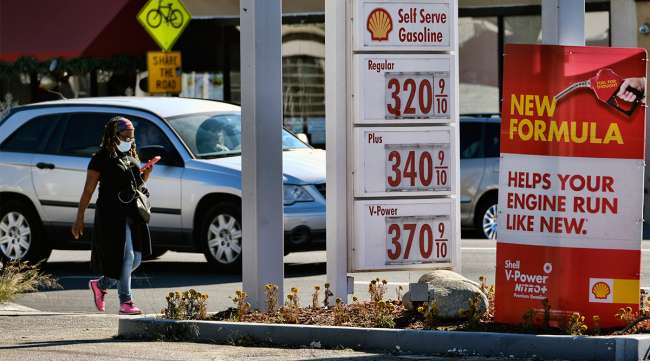Senior Reporter
Diesel Rises 3.3¢ in Sixth Straight Increase

[Ensure you have all the info you need in these unprecedented times. Subscribe now.]
The nationwide average price of diesel increased by 3.3 cents a gallon to $2.559, according to weekly data released by the U.S. Energy Information Administration on Dec. 14. Still, trucking’s primary fuel costs 48.7 cents less than it did a year ago.
This marks the sixth straight week that diesel’s price has increased. That is reflected in West Texas Intermediate crude oil, which continues to rise after falling to $36.81 a barrel Nov. 2. The industry benchmark crude closed Dec. 14 at $47.01, putting it up nearly 28% since early November.
However, gasoline increased by just two-tenths of a cent to $2.158 a gallon, 37.8 cents cheaper than a year ago.
U.S. average on-highway #diesel fuel price on 12/14/2020 was $2.559/gal, UP 3.3¢/gallon from 12/07/2020, DOWN 48.7¢/gallon from year ago https://t.co/tvkdMilKAf #truckers #shippers #fuelprices pic.twitter.com/IePESSYWZ0 — EIA (@EIAgov) December 15, 2020
U.S. average price for regular-grade #gasoline on 12/14/2020 was $2.158/gal, UP 0.2¢/gallon from 12/07/2020, DOWN 37.8¢/gallon from year ago https://t.co/UNQT20ddlR #gasprices pic.twitter.com/XBwbeXHBMp — EIA (@EIAgov) December 15, 2020
Diesel increased coast-to-coast as all 10 regions in EIA’s survey showed a rise of at least a penny, and nine climbed 2 cents or more.
The largest gain was in the Midwest, where diesel jumped 4.3 cents to $2.478 a gallon. Diesel in that area of the country is 49.2 cents less expensive than at this time in 2019.
The smallest increase was in the Rocky Mountain region, where it inched up 1.5 cents to $2.556, putting diesel there 60.5 cents less expensive than it was a year ago.
The least expensive diesel remains in the Gulf Coast, where the price increased 3.1 cents per gallon to $2.307 a gallon. Diesel is 45.6 cents cheaper in the Gulf Coast than it was a year ago.
The most expensive diesel continues to be in California, which is only one of two regions where the price tops $3 a gallon. Diesel in California was up 3.1 cents a gallon to $3.342 a gallon. Even with the increase, diesel in the Golden State is 54 cents less expensive than a year ago.
In its latest short-term energy report, EIA forecasts that the price of oil will continue to creep up into next year.
“Brent prices will average $49 a barrel in 2021, up from an expected average of $43 a barrel in the fourth quarter of 2020,” according to EIA’s projections. “The forecast for higher crude oil prices next year reflects EIA’s expectation that while inventories will remain high, they will decline with rising global oil demand and restrained OPEC+ oil production.
“EIA forecasts Brent prices will average $47 a barrel in the first quarter of 2021 and rise to an average of $50 a barrel by the fourth quarter.”
Brent crude is a light oil, though not as light as West Texas Intermediate, the industry’s benchmark. In recent years, Brent has become slightly more expensive on world markets because of vertical drilling, or fracking, than West Texas Intermediate.

Flynn
According to industry analyst Phil Flynn, oil prices have increased amid hopes that a rollout of COVID-19 vaccines will lift global fuel demand.
“We’re seeing a rebound in demand, and refiners have been tightening the supply,” said Flynn, who is based in Chicago. “The refiners had to work off a lot of diesel supply, and they have done all they can to draw down those inventories because there’s been a glut. We’re also seeing demand here in the U.S. and China start to go through the roof again.”
According to EIA, nationwide diesel inventories have dropped by 14% between the end of July and the beginning of November.

Kloza
Oil Price Information Service founder and industry analyst Tom Kloza told Transport Topics that the beginning of the home heating season also is helping to push up the price of diesel, especially in the Northeast and Midwest.
“It helps to have some cold weather coming in, especially in the Northeast,” Kloza said. “The heating season is Thanksgiving weekend to Valentine’s Day. That’s when you get the cold weather and the possibility, not probability you’ll be burning a lot of diesel. A cold winter in the Northern Hemisphere tends to energize the price [of diesel].”
Diesel and home heating oil are similar from a molecular standpoint, but diesel used in trucks must be below 15 parts per million sulfur content while heating oil must be below 500 ppm sulfur.
In its most recent Winter Fuel Outlook, EIA said it believes this winter could be colder than a year ago, and so-called heating degree days are expected to be 5% higher than last winter. Heating degree days are an approximate measure of how cold temperatures are compared with a base temperature.
Want more news? Listen to today's daily briefing:
Subscribe: Apple Podcasts | Spotify | Amazon Alexa | Google Assistant | More




